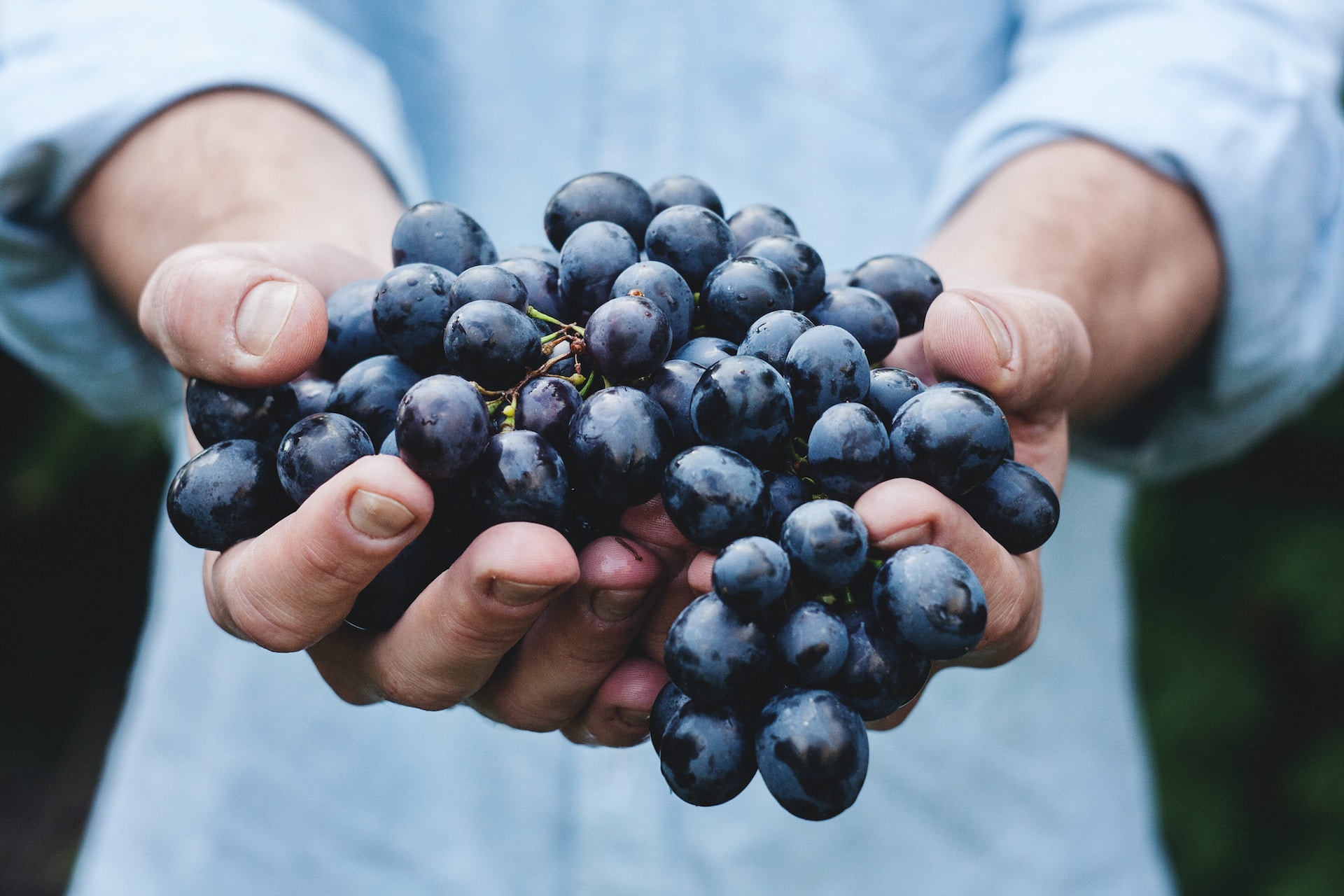Embarking on a journey that spans from the confines of a prison cell to the depths of a wine cellar, the remarkable tale of homemade prison wine captivates both the imagination and the taste buds. This intriguing saga weaves together the unlikely combination of ingenuity, resourcefulness, and a passion for the finer things in life. Behind bars, where time seems to stand still, inmates have discovered the art of transforming the most humble of ingredients into a liquid elixir that transcends its origins. From secret recipes passed down through generations to covert operations that rival any Hollywood heist, the world of homemade prison wine is a subculture all its own. Join us as we uncork the story of these clandestine winemakers, exploring the fascinating techniques, unexpected flavors, and undeniable allure of a beverage born out of necessity and transformed into a symbol of resilience and creativity. Welcome to the captivating journey from prison cells to wine cellars.
The History and Origins of Homemade Prison Wine

The history of homemade prison wine can be traced back to the early days of incarceration when inmates sought solace and escape from their harsh environments. The origins of this practice are believed to have emerged as a means of survival, as inmates turned to their creativity to find a way to cope with the monotony and despair of prison life. The exact origins of homemade prison wine are shrouded in mystery, but it is thought to have first gained popularity in the early 20th century.
In the early days, inmates relied on basic ingredients readily available within the prison walls, such as fruit, sugar, and yeast. These simple ingredients, combined with the ingenuity of the inmates, allowed for the creation of a crude yet surprisingly potent beverage. As the years went by, the art of making prison wine evolved, incorporating new techniques and ingredients to enhance both the taste and the potency of the final product.
The allure of homemade prison wine lies not only in its ability to satisfy the cravings of incarcerated individuals but also in its representation of the human spirit’s resilience and resourcefulness. It is a testament to the power of the human mind to find a sense of joy and creativity even in the most dire circumstances.
The Ingredients and Methods Used in Making Prison Wine
Making prison wine requires a delicate balance of ingredients and careful adherence to specific methods. The key ingredients typically used include fruit, sugar, water, and yeast. Inmates often use readily available fruits, such as oranges, apples, or even raisins, to extract the necessary sugars for fermentation. Sugar is added to the fruit mixture to increase the alcohol content, while water and yeast are essential for the fermentation process.
The methods employed in making prison wine vary from inmate to inmate, each with their own secret recipe and techniques. Some inmates prefer to use a traditional method that involves mashing the fruit and mixing it with sugar and water in a container, which is then sealed and left to ferment. Others may opt for a more elaborate approach, utilizing makeshift distillation equipment to extract the alcohol content from the fermented mixture.
The ingenuity displayed by inmates in creating their winemaking equipment is truly remarkable. From repurposed plastic bags and rubber gloves to toilet paper rolls and even old socks, anything that can hold and filter the liquid becomes a valuable resource within the prison walls. These makeshift tools not only serve a practical purpose but also highlight the resourcefulness and determination of inmates to pursue their passion for winemaking, even in the most challenging of circumstances.
The Challenges and Risks Associated with Making Prison Wine
While the art of making prison wine may seem like a fascinating endeavor, it is not without its challenges and risks. Inmates face several obstacles in their quest to create a successful batch of homemade wine. One of the primary hurdles is the lack of access to quality ingredients. Prisons are not known for their gourmet produce, and inmates must make do with whatever fruits are available to them. This can lead to variations in taste and quality, depending on the season and the availability of ingredients.
Another challenge is the strict surveillance within the prison system. Inmates must operate covertly to avoid detection by prison authorities, who prohibit the consumption of alcohol. The act of making prison wine is considered a serious offense and can result in disciplinary action or extended periods of incarceration. Inmates must exercise caution and employ stealthy techniques to avoid detection, often relying on a network of trusted individuals to assist in the production and distribution of their homemade wine.
The risks associated with making prison wine extend beyond the potential consequences of getting caught. Inmates must navigate the delicate balance of fermentation, ensuring that the alcohol content does not reach dangerous levels that could cause harm or even death. Without access to proper equipment and tools, controlling the fermentation process becomes a matter of trial and error, relying on the inmates’ intuition and experience.
Stories and Anecdotes from Inmates about Their Experiences with Homemade Prison Wine
The world of homemade prison wine is filled with stories and anecdotes that provide a glimpse into the lives of those who have mastered the art of winemaking behind bars. These tales of ingenuity, camaraderie, and triumph over adversity highlight the human spirit’s resilience in the face of adversity.
One such story involves a group of inmates who, through their collaborative efforts, managed to create a thriving winemaking operation within the confines of their prison. They established a secret winemaking club, complete with a code of conduct and a hierarchy of roles and responsibilities. Each member contributed their unique skills and knowledge to ensure the success of the operation, with some specializing in sourcing ingredients while others focused on the fermentation process. This remarkable display of teamwork and camaraderie not only resulted in a high-quality product but also provided a sense of purpose and community for those involved.
Another anecdote tells the tale of an inmate who, after serving his sentence, went on to establish a successful winery outside of prison. His experience with winemaking behind bars served as a catalyst for his passion, and he used the skills and knowledge he acquired to build a new life for himself. His story serves as a testament to the transformative power of homemade prison wine, not only as a means of survival but also as a pathway to redemption and a second chance at life.
The Cultural Significance of Homemade Prison Wine
Homemade prison wine holds a unique cultural significance within the prison subculture. It serves as a symbol of defiance and resistance against the oppressive nature of incarceration. Inmates who engage in winemaking view it as a form of escapism, a way to momentarily transcend the harsh realities of prison life and find solace in the creation of something beautiful and enjoyable. It is a way for them to assert their individuality and maintain a sense of identity in an environment that often seeks to strip them of their humanity.
Furthermore, homemade prison wine has also found a place in popular culture, serving as a source of inspiration for books, movies, and even music. These portrayals often romanticize the art of winemaking behind bars, emphasizing the ingenuity and resourcefulness of the inmates. While these depictions may not always accurately represent the reality of prison life, they contribute to the enduring allure and fascination of homemade prison wine in the public’s imagination.
The Legality and Consequences of Making Prison Wine
It is important to note that the production and consumption of homemade prison wine are illegal within the prison system. Inmates caught engaging in winemaking activities face disciplinary action, which can range from loss of privileges to extended periods of incarceration. Additionally, the consumption of prison wine can have severe health consequences, as the lack of proper equipment and monitoring can result in the production of potentially harmful substances.
Furthermore, the consequences of making prison wine extend beyond the individual inmates involved. The illegal production and distribution of homemade alcohol can create problems within the prison environment, leading to disruptions, violence, and even deaths. The presence of alcohol can exacerbate existing tensions and conflicts among inmates, putting both their safety and the security of the prison at risk.
Famous Instances of Homemade Prison Wine
Throughout history, there have been several notable instances of homemade prison wine that have captured the public’s attention. One such case involved a high-profile inmate who managed to establish a sophisticated winemaking operation within his prison cell. His story made headlines, as it highlighted the ingenuity and audacity of inmates to pursue their passions, even in the most unlikely of places.
Another famous instance involved a group of inmates who successfully smuggled their homemade wine out of prison and into the hands of wine connoisseurs. This audacious feat caught the attention of the media and further fueled the fascination surrounding homemade prison wine. These instances serve as a reminder of the determination and resourcefulness of inmates, as well as the challenges faced by prison authorities in combating illegal activities within their facilities.
The Potential Dangers and Health Risks of Consuming Prison Wine

While the allure of homemade prison wine may be tempting, it is crucial to acknowledge the potential dangers and health risks associated with its consumption. The lack of proper equipment and monitoring during the winemaking process can lead to the production of toxic substances, including methanol, which can cause severe health complications and even death.
In addition to the risks posed by the production process, the quality and safety of the ingredients used in making prison wine are often questionable. Inmates must make do with whatever fruits are available, which may be of poor quality or contaminated. This can result in the presence of harmful bacteria or toxins in the final product, posing a significant risk to the consumer’s health.
Furthermore, the consumption of prison wine can have psychological and social implications. Inmates who become dependent on alcohol as a means of escape may struggle with addiction and its associated consequences. The presence of alcohol within the prison environment can also contribute to the exacerbation of existing tensions and conflicts, further compromising the safety and well-being of both inmates and staff.
Conclusion: The Enduring Allure and Fascination of Homemade Prison Wine
In conclusion, the journey from prison cells to wine cellars is a captivating tale that transcends the boundaries of confinement. Homemade prison wine represents the indomitable spirit of individuals who, against all odds, find solace and creativity within the harshest of environments. The art of winemaking behind bars is a testament to the human capacity for resilience, resourcefulness, and the pursuit of joy, even in the face of adversity.
While the production and consumption of homemade prison wine remain illegal and come with significant risks, its allure and fascination persist. The stories, anecdotes, and cultural significance associated with homemade prison wine continue to capture the public’s imagination, serving as a reminder of the power of the human spirit to find beauty and joy in the most unlikely of places.
From secret recipes passed down through generations to the audacious feats of inmates who dared to smuggle their creations beyond prison walls, the world of homemade prison wine is a subculture all its own. It represents the human desire for freedom, creativity, and the pursuit of the finer things in life, no matter the circumstances. So, as we raise our glasses to toast to the enduring allure of homemade prison wine, let us also raise a toast to the resilience and creativity of the human spirit.
Related Reading
Top 10 Popular Beers in America – What Makes Them So Popular?
What is the Alcohol Percentage in Bud Light
Yuengling Draft Haus & Kitchen Tampa – #1 For Beer Aficionados





